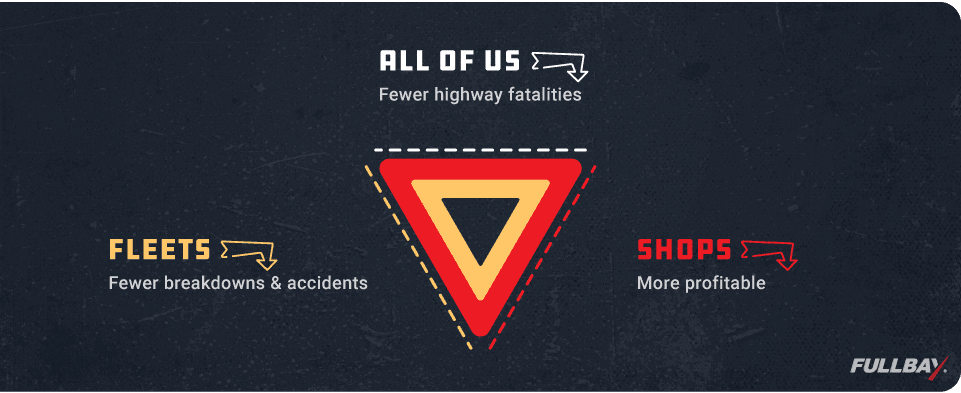In The Bay: Eleven Deaths a Day

Every year, over 4,000 people die in crashes involving large trucks. That works out to 11 deaths per day. Statistically, of those 11 deaths:
- Two will be truck drivers
- Two will be motorcyclists, bicyclists, or pedestrians
- Seven will be in passenger vehicles
That’s 11 yesterday, 11 today, and another 11 tomorrow. How would you answer if asked, “What is an acceptable level of deaths per day?”
What if the question were, “What is an acceptable level of deaths per day among your own family and friends?”
I think we’d all agree that the only acceptable level is zero.
So what can we do about it?
Well, if you work in the field of fleet maintenance and repair, you are part of the solution.
The Causes
As far as I can tell, no entity reports on the underlying causes of these fatalities. In fact, last week, I spoke with a member of the National Transportation Safety Board (NTSB), and he indicated they are just too understaffed to track it. But after speaking with several safety managers of large fleets, I can say that driver behavior is likely the main cause of the 11 daily deaths. That is followed by improper maintenance and weather conditions.
Driver Behavior
Driver distraction, drowsiness, and intoxication are the main causes of the 11 deaths per day. Collision avoidance systems (CAS) play a huge role in preventing or reducing the severity of collisions caused by driver behavior. Collision avoidance systems are not mandated in fleets yet, but many already deploy them. A regulation requiring CAS in commercial vehicles would virtually eliminate the problem of large trucks plowing into stationary vehicles.
Combine CAS with systems that track and take action on distracted and drowsy drivers, and we will probably save half or more of those 11 people, every day.
Improper Maintenance
It’s hard to avoid the reality that several deaths a day are the result of improper maintenance. These deaths could be caused by any of the following:
- Bad pre- and post-trip inspections
- Lack of follow-up on issues reported on a DVIR
- Poorly-executed preventive maintenance
Most units on the road are operated by small fleets. These small fleets often don’t have the manpower to staff a safety department that is focused on these issues. Instead, they have individuals wearing multiple hats doing their best to just keep things running day to day. Even larger fleets struggle to get drivers to do thorough inspections and effectively track PMs.
One safety manager told me that an estimated 52% of all medium- and heavy-duty trucks on the road are operating with a major safety violation.
The Role of Independent Shops
This is where independent shops come in. Shops that focus on taking over the preventive maintenance tracking for their fleet customers can bring tremendous value, particularly to smaller fleets. Thorough PM tracking, combined with regular inspections (shops should inspect every truck or trailer they touch) and quick-response, mobile repair and maintenance all combine to prevent not only catastrophic accidents, but unscheduled downtime overall.
This creates a virtuous triangle where the shops benefit, the fleets benefit, and the roads are safer for all of us:

Conclusion
The highway fatality statistics I cited above are from 2019, the latest year for which they are available. The NTSB has communicated preliminary numbers for 2020, and although fewer people were on the roads, fatalities are up about 10%. That means instead of 11 deaths per day, we could already be at 12.
This underscores the urgency to do better, both on driver behavior and fleet maintenance. Shops that embrace preventive maintenance tracking and performing thorough inspections every time they touch a truck or trailer not only make themselves and the fleets more money; they literally save lives.

